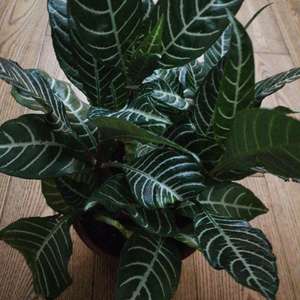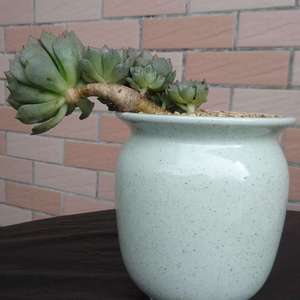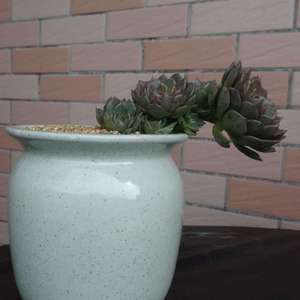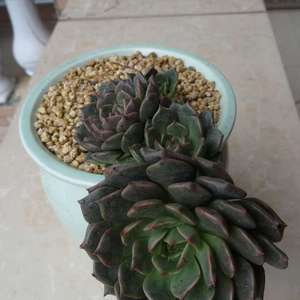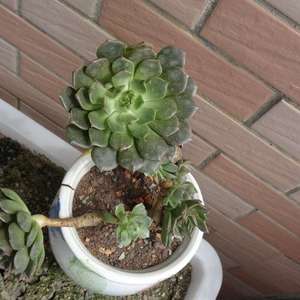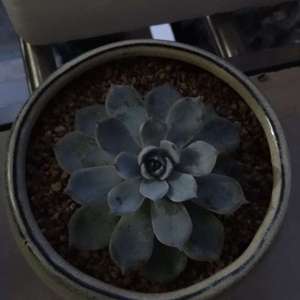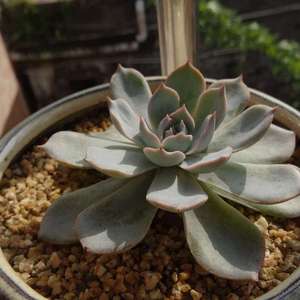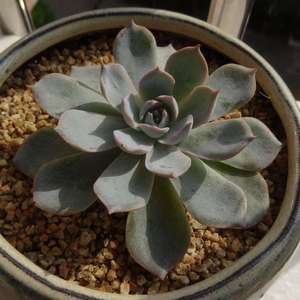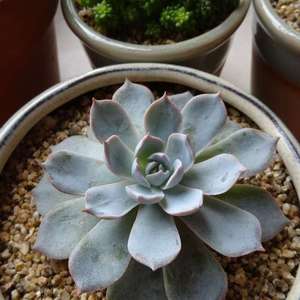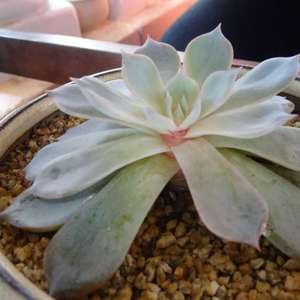文章
Miss Chen
2018年06月21日

Description: This perennial plant is ¾–2½' long. It either floats on water or sprawls across the ground. The stems are light green to red (often the latter), glabrous to sparsely pubescent, and terete. Alternate leaves along these stems are 1¼–3" long and ½–1" across; they are elliptic, oblong-elliptic, oblanceolate, or oblong-oblanceolate in shape and smooth along their margins. The leaves are usually glossy green in appearance, although sometimes they develop patches of red or yellow. The upper leaf surface is glabrous, while the lower leaf surface is glabrous to sparsely pubescent. The leaf bases taper gradually into slender petioles about ½–2" long. Individual flowers develop from the axils of the middle to upper leaves on erect to semi-erect pedicels about 1–3" long. Each flower is about 1" across, consisting of 5 yellow petals, 5 light green sepals, 10 yellow stamens, and a narrowly cylindrical pistil with a single style. The petals are obovate in shape with pale pinnate nerves, while the smaller sepals are lanceolate. Compared to the size of the flower, both the stamens and style are relatively short. Between the apex of the pedicel and the bottom of the pistil, there is a pair of tiny bractlets (about 1.0–1.5 mm. in length). The blooming period occurs from late spring to early fall, lasting several months. The flowers are diurnal.
Afterwards, the flowers are replaced by cylindrical seed capsules about 1–1½" long. Each seed capsule has 5 narrow cells, and each cell contains a row of seeds. The seeds are enclosed in chunky outer coatings (endocarps); they are about 1.0-1.5 mm. in length. The root system is fibrous and fleshy. When the nodes of the stems lie on wet ground, they are capable of developing new fibrous roots, from which new plants are produced vegetatively. Sometimes the root system produces small bladders that keep individual plants more buoyant in the water. This plant often forms large colonies.
Cultivation: The preference is full sun, wet conditions, and muddy soil, although this plant can adapt to shallow water as a floating aquatic. Creeping Water Primrose (Ludwigia peploides glabrescens) can spread aggressively in shallow wetlands and muddy areas. It is potentially invasive.

Range & Habitat: Creeping Water Primrose is locally common and native to southern Illinois, while in the rest of the state it is uncommon and probably adventive in most areas (see Distribution Map). This species is slowly spreading northward. Habitats include borders of ponds, shallow areas of lakes, sluggish streams, swamps, marshes, and ditches. In some of these habitats, Creeping Water Primrose can become the dominant shoreline plant, forming large colonies.
Faunal Associations: The flowers are cross-pollinated primarily by bees, including honeybees, digger bees (Eucerine), and Halictid bees. Other visitors, such as flies and skippers, are less effective at cross-pollination. These insects obtain nectar and/or pollen from the flowers. Some insects feed destructively on Creeping Water Primrose. This includes the flea beetles, Altica litigata and Lysathia ludoviciana, and a leafhopper, Draeculacephala inscripta. The Mallard and possibly other ducks feed on the seed capsules. Because of the large dense colonies that this plant often forms, it provides good cover along shorelines for various insects, frogs, and other wetland wildlife.

Photographic Location: Muddy shore of a pond in southern Illinois.
Comments: Creeping Water Primrose has showy flowers and attractive foliage. Unfortunately, it is sometimes too aggressive for its own good. It can be distinguished from other Ludwigia spp. by its larger 5-petaled flowers and sprawling semi-aquatic habit. Across its range in the United States and tropical America, different varieties of this species have been described, although only var. glabrescens has been found in Illinois. This variety can be distinguished by its more glabrous foliage. Another scientific name of this wetland plant is Jussiaea repens glabrescens, while an alternative common name is Creeping Primrose Willow.
Afterwards, the flowers are replaced by cylindrical seed capsules about 1–1½" long. Each seed capsule has 5 narrow cells, and each cell contains a row of seeds. The seeds are enclosed in chunky outer coatings (endocarps); they are about 1.0-1.5 mm. in length. The root system is fibrous and fleshy. When the nodes of the stems lie on wet ground, they are capable of developing new fibrous roots, from which new plants are produced vegetatively. Sometimes the root system produces small bladders that keep individual plants more buoyant in the water. This plant often forms large colonies.
Cultivation: The preference is full sun, wet conditions, and muddy soil, although this plant can adapt to shallow water as a floating aquatic. Creeping Water Primrose (Ludwigia peploides glabrescens) can spread aggressively in shallow wetlands and muddy areas. It is potentially invasive.

Range & Habitat: Creeping Water Primrose is locally common and native to southern Illinois, while in the rest of the state it is uncommon and probably adventive in most areas (see Distribution Map). This species is slowly spreading northward. Habitats include borders of ponds, shallow areas of lakes, sluggish streams, swamps, marshes, and ditches. In some of these habitats, Creeping Water Primrose can become the dominant shoreline plant, forming large colonies.
Faunal Associations: The flowers are cross-pollinated primarily by bees, including honeybees, digger bees (Eucerine), and Halictid bees. Other visitors, such as flies and skippers, are less effective at cross-pollination. These insects obtain nectar and/or pollen from the flowers. Some insects feed destructively on Creeping Water Primrose. This includes the flea beetles, Altica litigata and Lysathia ludoviciana, and a leafhopper, Draeculacephala inscripta. The Mallard and possibly other ducks feed on the seed capsules. Because of the large dense colonies that this plant often forms, it provides good cover along shorelines for various insects, frogs, and other wetland wildlife.

Photographic Location: Muddy shore of a pond in southern Illinois.
Comments: Creeping Water Primrose has showy flowers and attractive foliage. Unfortunately, it is sometimes too aggressive for its own good. It can be distinguished from other Ludwigia spp. by its larger 5-petaled flowers and sprawling semi-aquatic habit. Across its range in the United States and tropical America, different varieties of this species have been described, although only var. glabrescens has been found in Illinois. This variety can be distinguished by its more glabrous foliage. Another scientific name of this wetland plant is Jussiaea repens glabrescens, while an alternative common name is Creeping Primrose Willow.
0
0
文章
Miss Chen
2018年06月21日

Description: This perennial plant is 1-4' tall. It is erect and usually remains unbranched. The central stem is light to medium green, terete or angular, and glabrous to sparsely hairy. The alternate leaves are up to 5" long and 2" wide; they are oblanceolate, obovate, ovate, or broadly elliptic in shape, and their margins are serrated. The lower leaves clasp the central stem, while the upper leaves are sessile. The upper surfaces of leaves are medium to dark green and sparingly covered with short hairs. The central stem terminates in a spike-like raceme of flowers about ½-2' long.
The flowers are 1-1½" long, angled upward, and densely distributed along the raceme. Each flower has a blue-violet corolla (rarely white) that is narrowly bell-shaped (campanulate) and 2-lipped. The upper lip has 2 slender erect lobes that curve slightly inward or backward, while the lower lip has 3 descending lobes that are oblong-lanceolate. Near the throat of the flower at the base of the lower lobes, there is a pair of small white patches. The green calyx is deeply divided into 5 linear-lanceolate teeth; it is conspicuously hairy. The calyx teeth are long and spreading. The blooming period occurs from late summer into fall, lasting about 2 months. Afterwards, the flowers are replaced by capsules containing small seeds. These seeds are probably distributed by wind or water to some extent. The root system consists of a central taproot, fromDistribution Map which occasional basal offshoots are produced.
Cultivation: The preference is wet to moist soil and partial sun. Full sun is tolerated if the soil is consistently moist, and light shade is also acceptable. The soil should be fertile and loamy. This plant withstands occasional flooding, but it will become muddy and ragged-looking if it receives too much abuse. The small seeds require light to germinate. Great Blue Lobelia can be highly variable in height, depending on environmental conditions and its stage of development.
Range & Habitat: The native Great Blue Lobelia occurs throughout Illinois, except for a few counties in southern Illinois. It is occasional to locally common. Typical habitats include moist black soil prairies, soggy meadows near rivers, low areas along rivers and ponds, floodplain and bottomland woodlands, woodland borders, bottoms of sandstone canyons along streams, swamps, fens, gravelly seeps and springs, ditches, and moist areas of pastures. Great Blue Lobelia can be found in both disturbed areas and high quality habitats.
Faunal Associations: The nectar and pollen of the flowers attract primarily bumblebees and other long-tongued bees (Anthophora spp., Melissodes spp., Svastra spp.). Less common visitors include the Ruby-Throated Hummingbird, large butterflies, and Halictid bees. The Halictid bees collect pollen only and they are non-pollinating. The caterpillars of a moth, Enigmogramma basigera (Pink-washed Looper Moth), feed on the foliage of Great Blue Lobelia (Schweitzer & Roberts, 2007). Most mammalian herbivores don't eat this plant because the foliage contains several toxic alkaloids, chief among them being lobeline and lobelanine. These toxic substances produce symptoms that resemble nicotine poisoning. However, it has been reported that deer occasionally eat this plant, perhaps enjoying greater immunity to these toxic substances than other animals. The seeds are too small to be of much value to birds.
Photographic Location: The photographs were taken at a garden of the Anita Purves Nature Center in Urbana, Illinois.

Comments: Great Blue Lobelia is a lovely plant that produces some welcome diversity with its violet-blue flowers during late summer or fall, when forbs with yellow flowers are typically dominant. Unfortunately, its value to wildlife is rather limited. Among the Lobelia spp. with bluish flowers in Illinois, Great Blue Lobelia has the largest flowers and they are usually a more deep shade of blue-violet, making it easy to identify.
The flowers are 1-1½" long, angled upward, and densely distributed along the raceme. Each flower has a blue-violet corolla (rarely white) that is narrowly bell-shaped (campanulate) and 2-lipped. The upper lip has 2 slender erect lobes that curve slightly inward or backward, while the lower lip has 3 descending lobes that are oblong-lanceolate. Near the throat of the flower at the base of the lower lobes, there is a pair of small white patches. The green calyx is deeply divided into 5 linear-lanceolate teeth; it is conspicuously hairy. The calyx teeth are long and spreading. The blooming period occurs from late summer into fall, lasting about 2 months. Afterwards, the flowers are replaced by capsules containing small seeds. These seeds are probably distributed by wind or water to some extent. The root system consists of a central taproot, fromDistribution Map which occasional basal offshoots are produced.
Cultivation: The preference is wet to moist soil and partial sun. Full sun is tolerated if the soil is consistently moist, and light shade is also acceptable. The soil should be fertile and loamy. This plant withstands occasional flooding, but it will become muddy and ragged-looking if it receives too much abuse. The small seeds require light to germinate. Great Blue Lobelia can be highly variable in height, depending on environmental conditions and its stage of development.
Range & Habitat: The native Great Blue Lobelia occurs throughout Illinois, except for a few counties in southern Illinois. It is occasional to locally common. Typical habitats include moist black soil prairies, soggy meadows near rivers, low areas along rivers and ponds, floodplain and bottomland woodlands, woodland borders, bottoms of sandstone canyons along streams, swamps, fens, gravelly seeps and springs, ditches, and moist areas of pastures. Great Blue Lobelia can be found in both disturbed areas and high quality habitats.
Faunal Associations: The nectar and pollen of the flowers attract primarily bumblebees and other long-tongued bees (Anthophora spp., Melissodes spp., Svastra spp.). Less common visitors include the Ruby-Throated Hummingbird, large butterflies, and Halictid bees. The Halictid bees collect pollen only and they are non-pollinating. The caterpillars of a moth, Enigmogramma basigera (Pink-washed Looper Moth), feed on the foliage of Great Blue Lobelia (Schweitzer & Roberts, 2007). Most mammalian herbivores don't eat this plant because the foliage contains several toxic alkaloids, chief among them being lobeline and lobelanine. These toxic substances produce symptoms that resemble nicotine poisoning. However, it has been reported that deer occasionally eat this plant, perhaps enjoying greater immunity to these toxic substances than other animals. The seeds are too small to be of much value to birds.
Photographic Location: The photographs were taken at a garden of the Anita Purves Nature Center in Urbana, Illinois.

Comments: Great Blue Lobelia is a lovely plant that produces some welcome diversity with its violet-blue flowers during late summer or fall, when forbs with yellow flowers are typically dominant. Unfortunately, its value to wildlife is rather limited. Among the Lobelia spp. with bluish flowers in Illinois, Great Blue Lobelia has the largest flowers and they are usually a more deep shade of blue-violet, making it easy to identify.
0
0
文章
Miss Chen
2018年06月21日

Description: This perennial wildflower is ½-1½' tall and either branched or unbranched. The slender stem(s) is light green to purple. Alternate leaves about ½-2" long and 1-5 mm. across occur along the stem(s). The leaves are light to medium green, linear to linear-oblong in shape, and usually smooth along their margins. The central stem and any lateral stems terminate in racemes of flowers; the flowers are distributed sparsely along the rachis of each raceme. Each flower is ¼-½" across, consisting of a 2-lipped tubular corolla that is light blue (rarely white), a bell-shaped (campanulate) calyx with 5 slender teeth that are light green to purple, 5 stamens, and a 2-celled ovary with a single style. The stamens tightly surround the style. The upper lip of the corolla is divided into 2 small narrow lobes, while the lower lip is divided into 3 large lobes. At the base of the corolla's lower lip, there is a conspicuous patch of white; sometimes this patch becomes yellow along its upper boundary near the throat of the corolla. The corolla is hairless throughout, while sometimes the bottom of the calyx is pubescent. The slender pedicels of the flowers are ¼-1" long; they are light green to purple and either glabrous or minutely pubescent. Toward the middle of each pedicel there is a tiny linear bractlet; at the base of each pedicel there is a linear bract that is about the same length as the pedicel. The blooming period occurs from mid-summer to early fall and lasts about 1 month. Afterwards, the flowers are replaced by seed capsules about 4 mm. across; each capsule splits open at its apex to release numerous tiny seeds that are narrowly oblongoid and compressed (somewhat flattened) in shape. The seeds are small enough to be blown about by the wind or transported by water. The root system is shallow and fibrous.
Cultivation: The preference is full sun, wet to consistently moist conditions, and soil that is sandy to sandy-peaty and calcareous. Episodic periods of shallow water are tolerated.
Range & Habitat: The native Kalm's Lobelia occurs in northern Illinois, where it is uncommon (see Distribution Map). Illinois lies along the southern range limit of this species. Habitats include grassy fens, wet sandy meadows, borders of interdunal swales, low areas along springs, and bogs. This conservative species is found in high quality wetlands where the original flora remains intact.

Faunal Associations: Very little is known about floral-faunal relationships for this species. The flowers are probably cross-pollinated by various bees and small butterflies. Like other Lobelia spp., Kalm's Lobelia has an acrid sap that is more or less toxic to mammalian herbivores.
Photographic Location: A fen in NE Illinois. The photographs were taken by Lisa Culp, Copyright © 2011.
Comments: This is one of the less common Lobelia species in Illinois. Kalm's Lobelia has a delicate beauty that derives from its pastel blue flowers and slender foliage. It is somewhat similar in appearance to Pale-Spiked Lobelia (Lobelia spicata), but its leaves are more narrow (less than ¼" across). Other Lobelia species in the state also have wider leaves, and some species have larger flowers. Another common name of Lobelia kalmii is Brook Lobelia.
Cultivation: The preference is full sun, wet to consistently moist conditions, and soil that is sandy to sandy-peaty and calcareous. Episodic periods of shallow water are tolerated.
Range & Habitat: The native Kalm's Lobelia occurs in northern Illinois, where it is uncommon (see Distribution Map). Illinois lies along the southern range limit of this species. Habitats include grassy fens, wet sandy meadows, borders of interdunal swales, low areas along springs, and bogs. This conservative species is found in high quality wetlands where the original flora remains intact.

Faunal Associations: Very little is known about floral-faunal relationships for this species. The flowers are probably cross-pollinated by various bees and small butterflies. Like other Lobelia spp., Kalm's Lobelia has an acrid sap that is more or less toxic to mammalian herbivores.
Photographic Location: A fen in NE Illinois. The photographs were taken by Lisa Culp, Copyright © 2011.
Comments: This is one of the less common Lobelia species in Illinois. Kalm's Lobelia has a delicate beauty that derives from its pastel blue flowers and slender foliage. It is somewhat similar in appearance to Pale-Spiked Lobelia (Lobelia spicata), but its leaves are more narrow (less than ¼" across). Other Lobelia species in the state also have wider leaves, and some species have larger flowers. Another common name of Lobelia kalmii is Brook Lobelia.
0
0
文章
Miss Chen
2018年06月21日

Description: This herbaceous perennial plant is usually unbranched and 2–3½' tall. The central stem is light green, terete, and sparingly to densely hairy. The alternate leaves are up 6" long and 1½" across, but they are typically about one-half of this maximum size. The rough-textured leaves are lanceolate in shape and coarsely serrated along their margins; they have a tendency to curl upward along their central veins. The lower leaves have short petioles, while the upper ones are sessile. The undersides of leaves usually have fine hairs.
The central stem terminates in a spike-like raceme of showy red flowers (rarely white). This raceme is about ½–1½' long. The red corolla of each flower has a narrow tubular structure that is upright and terminates in grayish white reproductive organs; these organs nod downward. Beneath this are 2 narrow lateral lobes and a lower lip that is 3-lobed. The green calyx is deeply divided into 5 linear teeth that spread outward. The flowers are held at an upward angle in relation to the stem; they are about 1–1½" long and ¾–1" across. The blooming period occurs from late summer to early fall, lasting about 1–1½ months. There is no floral scent. The small seeds can be carried aloft by the wind. The root system consists of a taproot.

Cultivation: The preference is light shade to full sun, and wet to moist conditions. Cardinal Flower adapts to loam, sandy loam, or gravelly soil; the soil should contain some organic matter to retain moisture. This plant doesn't like to dry out and it has a reputation of being temperamental and short-lived. It is easier to establish this plant using transplants, as the seeds are quite small and the young seedlings are rather fragile.

Range & Habitat: The native Cardinal Flower has been observed in most counties of Illinois; it is occasional to locally common in southern Illinois, while in northern and central Illinois it tends to be less common or absent (see Distribution Map). Habitats include wet prairies, prairie swales, openings in floodplain and bottomland woodlands, soggy meadows along rivers and streams, gravelly seeps and springs, borders of ponds, edges of small marshes, and ditches. These habitats include both sandy and non-sandy areas. Cardinal Flower is often found in sunny areas near sources of water, or it is found in open woodland areas where moist depressions occur.

Faunal Associations: The nectar of the flowers attracts the Ruby-Throated Hummingbird and various Swallowtail butterflies, including such species as Papilio polyxenes asterias (Black Swallowtail), Papilio troilus (Spicebush Swallowtail), and Battus philenor (Pipevine Swallowtail). Sometimes the larger bumblebees will steal nectar through slits in the tubular corolla. Halictid bees sometimes gather pollen, but they are ineffective at pollination. The larvae of a polyphagous fly, Metopomyza scutellata, mine the leaves of Cardinal Flower. The caterpillars of a moth, Enigmogramma basigera (Pink-washed Looper Moth), also feed on the leaves (Schweitzer & Roberts, 2007). The seeds are too small to be of much interest to birds. Mammalian herbivores usually don't consume this plant because of the toxic white latex in the foliage. While it's a beautiful plant, the ecological value of Cardinal Flower to wildlife is relatively low.
Photographic Location: Most of the photographs were taken by the webmaster at Meadowbrook Park in Urbana, Illinois; the plants were growing in a prairie swale. The photograph of a Cardinal Plant with rare white flowers was taken by Paul Showers (Copyright © 2013) in northeast Illinois.

Comments: The Cardinal Flower has striking red flowers that remind me of the Northern Cardinal and other exotic birds. Red is an unusual color in wildflowers – an attribute that it shares with Silene regia (Royal Catchfly) and Silene virginica (Fire Pink). Plants with red flowers typically attract hummingbirds; sometimes they also attract Swallowtail butterflies because their compound eyes, unlike those of bees, can detect the color red. The Cardinal Flower is often sold at garden centers, but such plants are often hybrids or special cultivars. One such hybrid is Lobelia X speciosa, which is a genetic cross of Lobelia cardinalis and Lobelia siphilitica (Great Blue Lobelia). This hybrid can naturalize in the wild, and resembles the former species to a greater extent than the latter. Its flowers are often magenta or deep rose, rather than brilliant red.
The central stem terminates in a spike-like raceme of showy red flowers (rarely white). This raceme is about ½–1½' long. The red corolla of each flower has a narrow tubular structure that is upright and terminates in grayish white reproductive organs; these organs nod downward. Beneath this are 2 narrow lateral lobes and a lower lip that is 3-lobed. The green calyx is deeply divided into 5 linear teeth that spread outward. The flowers are held at an upward angle in relation to the stem; they are about 1–1½" long and ¾–1" across. The blooming period occurs from late summer to early fall, lasting about 1–1½ months. There is no floral scent. The small seeds can be carried aloft by the wind. The root system consists of a taproot.

Cultivation: The preference is light shade to full sun, and wet to moist conditions. Cardinal Flower adapts to loam, sandy loam, or gravelly soil; the soil should contain some organic matter to retain moisture. This plant doesn't like to dry out and it has a reputation of being temperamental and short-lived. It is easier to establish this plant using transplants, as the seeds are quite small and the young seedlings are rather fragile.

Range & Habitat: The native Cardinal Flower has been observed in most counties of Illinois; it is occasional to locally common in southern Illinois, while in northern and central Illinois it tends to be less common or absent (see Distribution Map). Habitats include wet prairies, prairie swales, openings in floodplain and bottomland woodlands, soggy meadows along rivers and streams, gravelly seeps and springs, borders of ponds, edges of small marshes, and ditches. These habitats include both sandy and non-sandy areas. Cardinal Flower is often found in sunny areas near sources of water, or it is found in open woodland areas where moist depressions occur.

Faunal Associations: The nectar of the flowers attracts the Ruby-Throated Hummingbird and various Swallowtail butterflies, including such species as Papilio polyxenes asterias (Black Swallowtail), Papilio troilus (Spicebush Swallowtail), and Battus philenor (Pipevine Swallowtail). Sometimes the larger bumblebees will steal nectar through slits in the tubular corolla. Halictid bees sometimes gather pollen, but they are ineffective at pollination. The larvae of a polyphagous fly, Metopomyza scutellata, mine the leaves of Cardinal Flower. The caterpillars of a moth, Enigmogramma basigera (Pink-washed Looper Moth), also feed on the leaves (Schweitzer & Roberts, 2007). The seeds are too small to be of much interest to birds. Mammalian herbivores usually don't consume this plant because of the toxic white latex in the foliage. While it's a beautiful plant, the ecological value of Cardinal Flower to wildlife is relatively low.
Photographic Location: Most of the photographs were taken by the webmaster at Meadowbrook Park in Urbana, Illinois; the plants were growing in a prairie swale. The photograph of a Cardinal Plant with rare white flowers was taken by Paul Showers (Copyright © 2013) in northeast Illinois.

Comments: The Cardinal Flower has striking red flowers that remind me of the Northern Cardinal and other exotic birds. Red is an unusual color in wildflowers – an attribute that it shares with Silene regia (Royal Catchfly) and Silene virginica (Fire Pink). Plants with red flowers typically attract hummingbirds; sometimes they also attract Swallowtail butterflies because their compound eyes, unlike those of bees, can detect the color red. The Cardinal Flower is often sold at garden centers, but such plants are often hybrids or special cultivars. One such hybrid is Lobelia X speciosa, which is a genetic cross of Lobelia cardinalis and Lobelia siphilitica (Great Blue Lobelia). This hybrid can naturalize in the wild, and resembles the former species to a greater extent than the latter. Its flowers are often magenta or deep rose, rather than brilliant red.
2
0
文章
张祥明
2018年06月20日

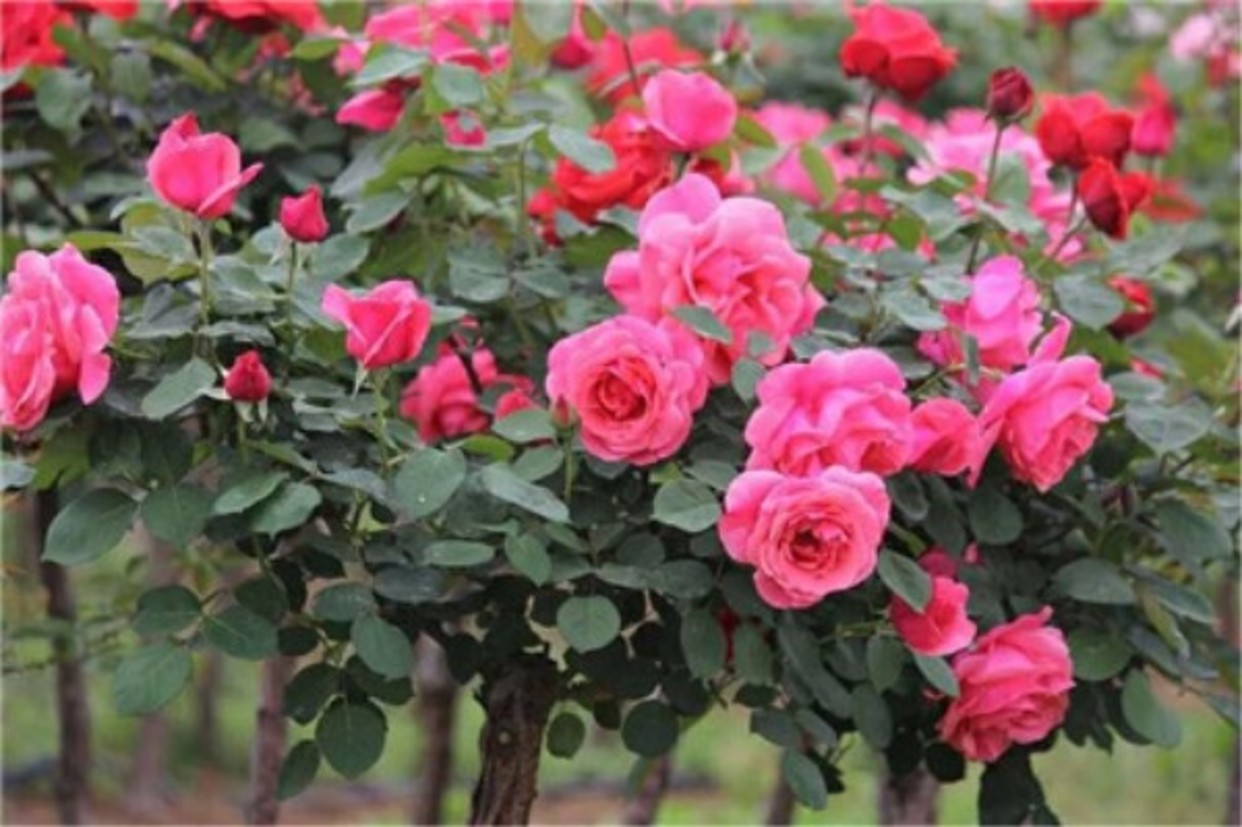
新叶发黄
有些花友新买的月季没几天,月季就开始从“头”发黄了,主要是新叶,老叶也没啥事

原因:1、浇水过多;2、缺铁元素
花友们根据排除法,看看自家的月季到底是哪种诱因,一般连土一起买回家的不会立即缺铁,搞不好就是水浇多啦
对策:
1、减少浇水,盆土干了再浇
2、浇硫酸亚铁溶液,或者淘米水发酵1-2周,兑70%的清水,浇在盆土里,不要浇到月季上
老叶黄掉
一看到叶子都这么黄了,花友就急的不行,这可咋办?哈哈,这下真是瞎着急了,你的月季什么病都没有
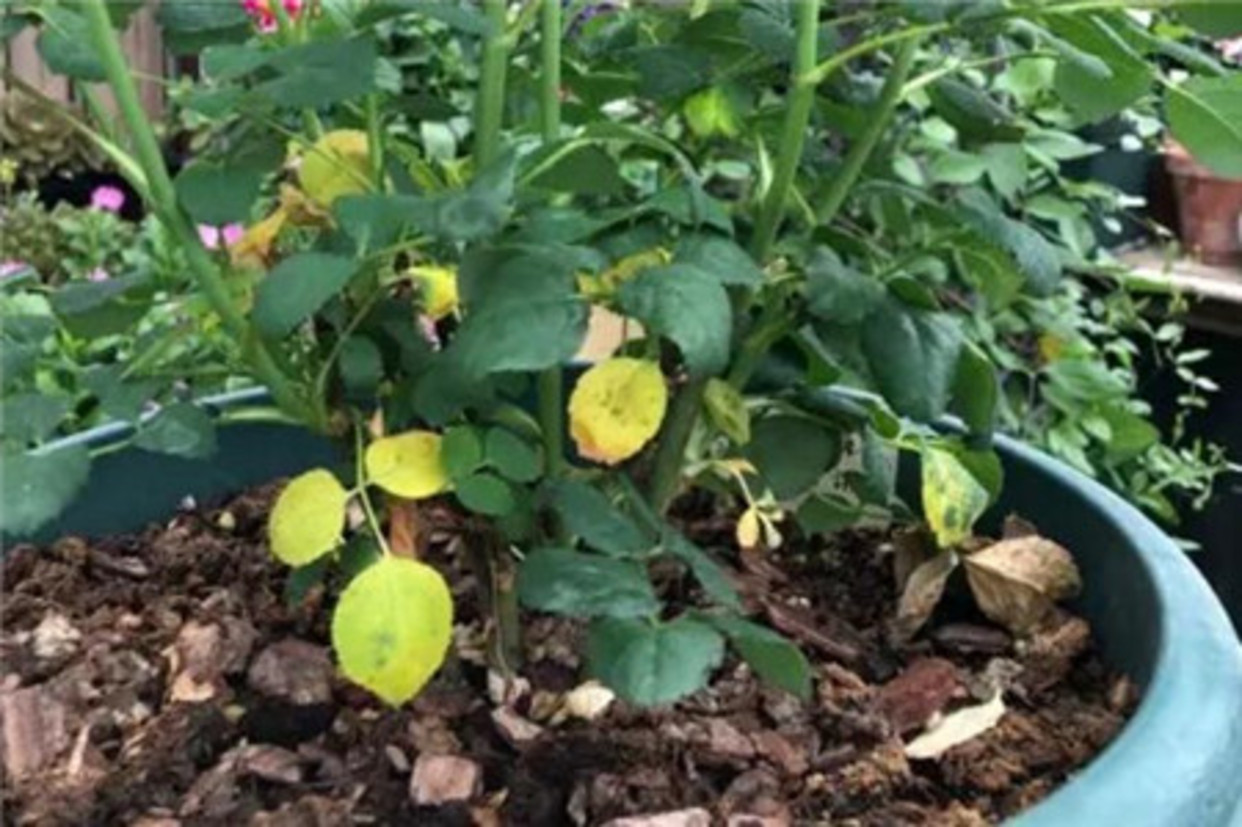
原因:正常新陈代谢,自然新老更替
月季长势快,新叶子不断冒出来,底部的老叶子当然自然“退休”了
对策:
直接摘掉老叶,不要留在盆里,避免腐烂滋生细菌,引发其他病变
老叶尖发黄、干枯
如果月季的老叶没有全黄,而是从叶尖开始发黄,干枯,这不是自然老化,而是缺营养!
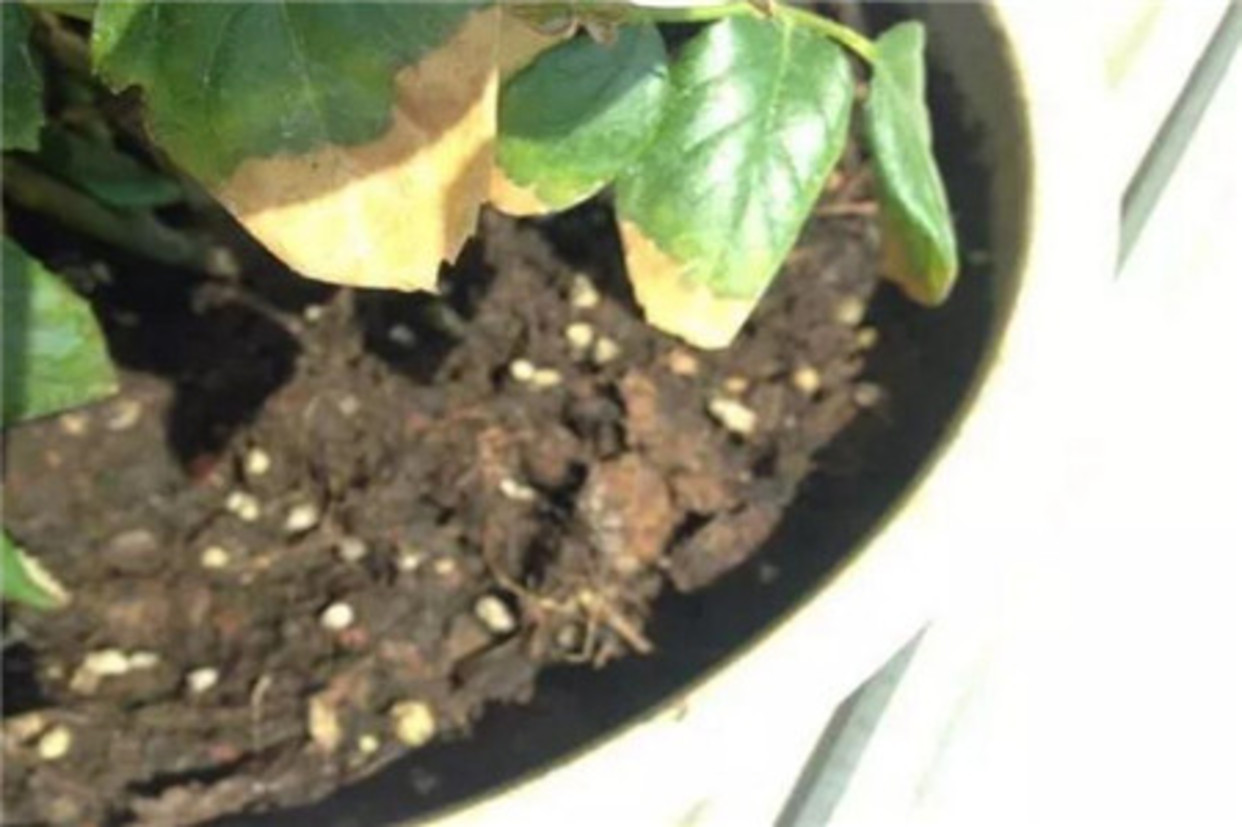
原因:缺钾
缺钾的月季不但叶子不正常,整棵长势也不明显,比较瘦弱,一般盆土里泥炭土、沙土居多的话,容易缺钾
对策:
1、添加一些腐叶土,增加全面营养
2、每月浇1-2次的硫酸钾溶液
3、摘掉老叶,不要放在盆里,避免腐烂滋生细菌
叶子发黄,凹凸不平
如果叶子发黄、泛橙色、叶脉颜色深,叶面有些凹凸起伏,也是缺了某种营养
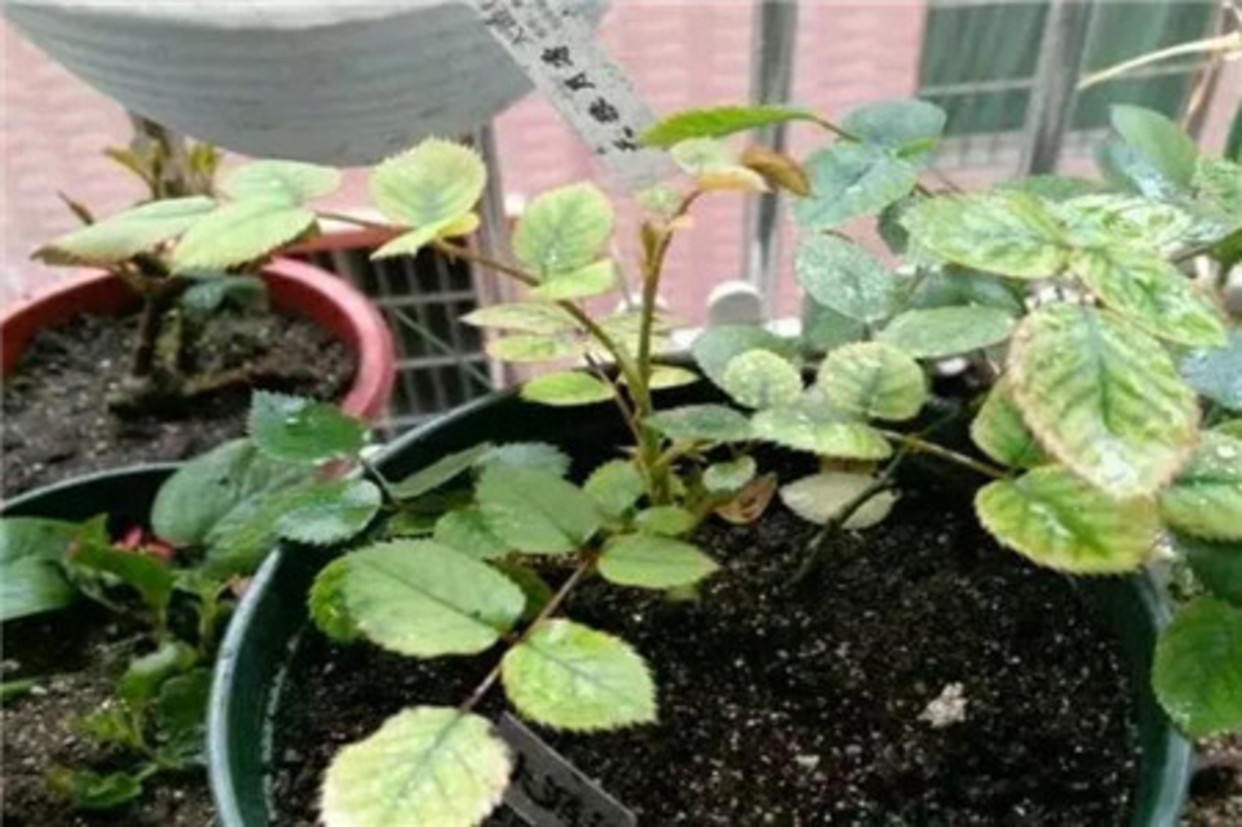
原因:缺镁、缺钙
一般缺镁和缺钙同时出现,月季开始生长不良,或停止生长,然后黄叶掉叶,这时候想开花都难
对策:
1、浇硫酸镁溶液(加水溶度为0.1%)
2、每月往盆土里掺2-5克骨粉;掺碎鸡蛋壳
3、大豆泡水,发酵1-2周后,兑水浇盆土里(浓度为0.2%)
叶子全黄
正长的壮的叶子完全没了绿色,连叶脉也变黄了,黄掉的叶子还带一点橙色、红色
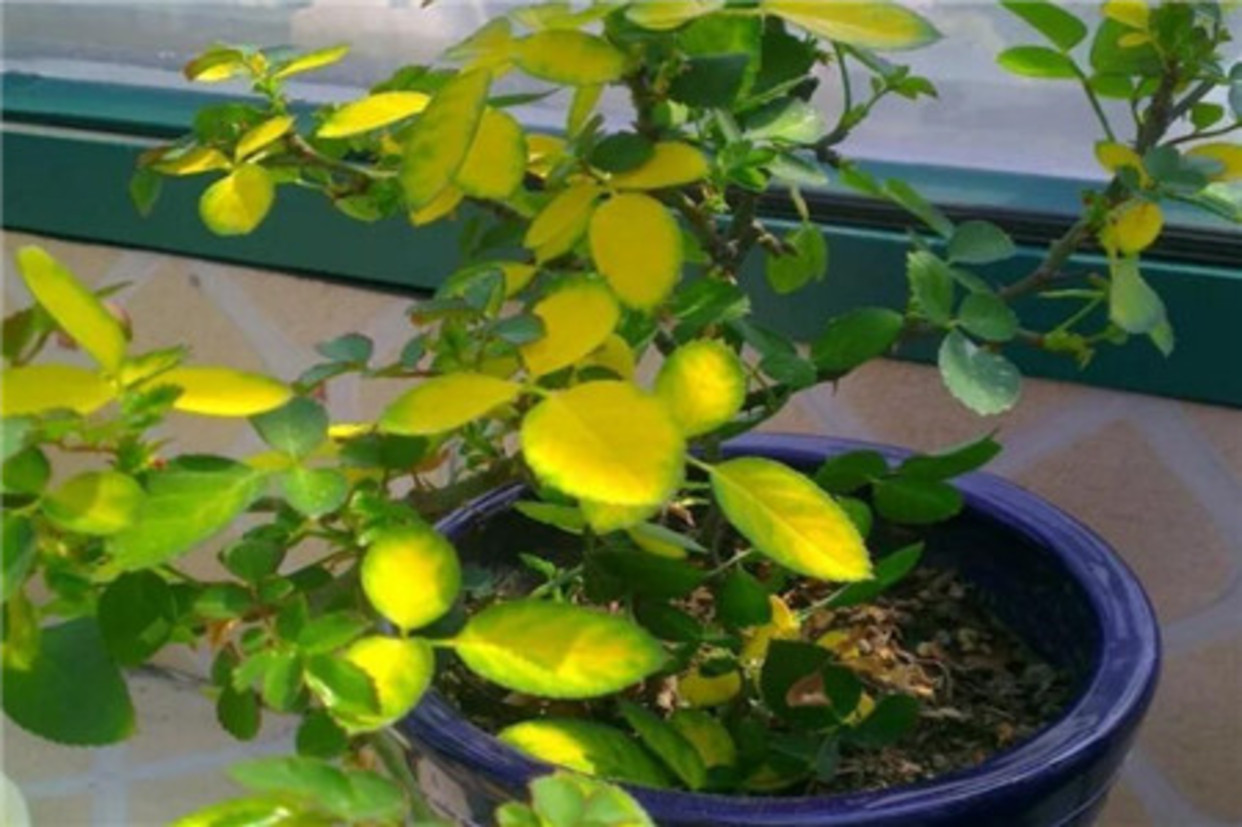
原因:缺硫、缺氮
缺硫一般是上面的叶子先黄,缺氮则是下面的叶子先黄,花友们可以根据黄叶的位置来判断
对策:
1、看盆土是否疏松,适当松土
2、摘除黄叶、修剪弱枝
3、追加氮肥、尿素,薄肥多施
4、添加粪肥、豆饼肥
叶子打卷、发黄
有些花友家的月季养的不错,养着养着叶子就卷了、黄了,有的甚至叶边焦黄,感觉好像被火烧过一样
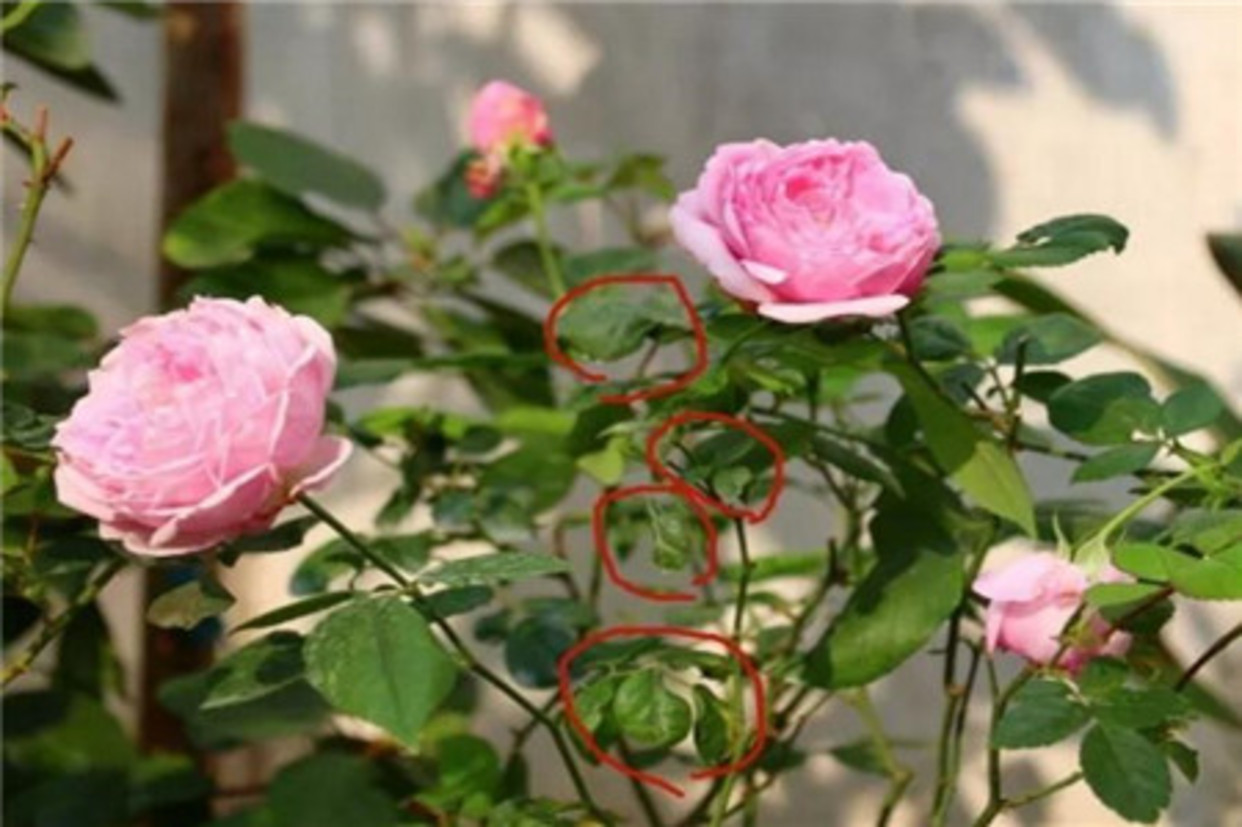
原因:1、肥大;2肥伤
叶子还是绿色有光泽,叶脉颜色深,排除虫害,应该是肥大或肥伤,这也不是好事,严重的话直接烧死月季
有些花友纳闷,我家都没施肥,怎么肥伤?有些地区下雨,导致土壤里的盐碱度增高,月季根系无法再吸收
对策:
1、停止加肥,如果只有几片叶子卷缩,就多浇几次水,冲淡肥力
2、堆肥的话,适当取出一点肥出来
3、比较严重的肥大现象,最好直接换土
4、肥伤,扒掉表层盆土,暂时控水,土干再浇,严重时直接换土
5
7
文章
Miss Chen
2018年06月18日

Description: This herbaceous perennial plant is unbranched and about 3-6' tall. The central stem is smooth and sometimes reddish. The alternate compound leaves are up to 2' long. They are often yellowish green, and become much smaller and sparser while ascending the central stem. Each compound leaf consists of 1-7 palmate leaflets that are aligned along each reddish leaf-stem in succession. Each leaflet is up to 6" long and across and has 2-5 cleft lobes. The margins are coarsely dentate.
The inflorescence occurs on a long naked stalk, consisting of a panicle of pink buds and flowers about 5-8" across. Each flower is about 1/3" across, consisting of 5 pink petals and numerous long white stamens with pink anthers. The overall appearance of the inflorescence resembles wind-tossed fluff or foam, and is quite beautiful. The flowers bloom from the bottom up, and have little or no fragrance. The blooming period occurs from early to mid-summer, and lasts about 3 weeks. Afterwards, straight reddish fruits develop that are about ¼–½" across. The root system consists of a taproot and rhizomes. Queen-of-the-Prairie tends to form colonies under moist conditions.
Cultivation: The preference is full or partial sun, and wet to moist conditions. The soil should be high in organic content, and can contain a little sand. The cooler climate of the Great Lakes region is preferred, rather than hot, dry summer heat. Occasionally, the leaves become spotted from foliar disease, otherwise it is not subject to any special problems.

Range & Habitat: The native Queen-of-the-Prairie occurs primarily in scattered counties along the upper basin of the Illinois River and in the Chicago area. It has also been observed in east central Illinois (see Distribution Map), where it has been successfully introduced. This uncommon plant is listed as 'threatened' in Illinois. Habitats include moist black soil prairies, moist sand prairies, moist meadows along rivers in woodland areas, shrubby fens, and wet areas in or around seeps and springs. This is an indicator plant of high quality habitats, although in some areas it has been introduced as part of restoration efforts.
Faunal Associations: The colorful flowers provide pollen as a reward for insect visitors, but not nectar. Various species of bees collect pollen from the flowers and probably are the most important pollinators. Beetles and flies feed on the pollen. Wasps and butterflies may land on the flowers looking for nectar, but their search will be futile. Little is known about the floral-fauna relationships for birds and mammals. The foliage doesn't seem to be bothered by deer and other herbivorous mammals.

Photographic Location: The photographs were taken at Meadowbrook Park in Urbana, Illinois.
Comments: This is a wonderful plant, if only it would bloom longer! In prairies, the pink flowers rise above the surrounding vegetation and can be seen from a considerable distance. It has a very distinctive appearance, and can't be confused with any other native plant. However, the introduced Filipendula ulmaria (Queen-of-the-Meadow) is somewhat similar. This latter species differs from Queen-of-the-Prairie by having white flowers and twisted fruits.
The inflorescence occurs on a long naked stalk, consisting of a panicle of pink buds and flowers about 5-8" across. Each flower is about 1/3" across, consisting of 5 pink petals and numerous long white stamens with pink anthers. The overall appearance of the inflorescence resembles wind-tossed fluff or foam, and is quite beautiful. The flowers bloom from the bottom up, and have little or no fragrance. The blooming period occurs from early to mid-summer, and lasts about 3 weeks. Afterwards, straight reddish fruits develop that are about ¼–½" across. The root system consists of a taproot and rhizomes. Queen-of-the-Prairie tends to form colonies under moist conditions.
Cultivation: The preference is full or partial sun, and wet to moist conditions. The soil should be high in organic content, and can contain a little sand. The cooler climate of the Great Lakes region is preferred, rather than hot, dry summer heat. Occasionally, the leaves become spotted from foliar disease, otherwise it is not subject to any special problems.

Range & Habitat: The native Queen-of-the-Prairie occurs primarily in scattered counties along the upper basin of the Illinois River and in the Chicago area. It has also been observed in east central Illinois (see Distribution Map), where it has been successfully introduced. This uncommon plant is listed as 'threatened' in Illinois. Habitats include moist black soil prairies, moist sand prairies, moist meadows along rivers in woodland areas, shrubby fens, and wet areas in or around seeps and springs. This is an indicator plant of high quality habitats, although in some areas it has been introduced as part of restoration efforts.
Faunal Associations: The colorful flowers provide pollen as a reward for insect visitors, but not nectar. Various species of bees collect pollen from the flowers and probably are the most important pollinators. Beetles and flies feed on the pollen. Wasps and butterflies may land on the flowers looking for nectar, but their search will be futile. Little is known about the floral-fauna relationships for birds and mammals. The foliage doesn't seem to be bothered by deer and other herbivorous mammals.

Photographic Location: The photographs were taken at Meadowbrook Park in Urbana, Illinois.
Comments: This is a wonderful plant, if only it would bloom longer! In prairies, the pink flowers rise above the surrounding vegetation and can be seen from a considerable distance. It has a very distinctive appearance, and can't be confused with any other native plant. However, the introduced Filipendula ulmaria (Queen-of-the-Meadow) is somewhat similar. This latter species differs from Queen-of-the-Prairie by having white flowers and twisted fruits.
0
1
文章
Miss Chen
2018年06月18日

Description: This perennial wildflower is 2-5' tall and usually unbranched, except where the inflorescence occurs. There are no basal leaves. The terete central stem is light green, purplish red, or yellowish brown; the typical variety is glabrous or sparsely short-pubescent, while var. pubens tends to be more pubescent. Alternate leaves occur along the entire length of the stem; they are ascending and slightly recurved. The lowermost leaves are small and scale-like, while the remaining leaves are 3-5" long, ½-1" across, and relatively uniform in size as they ascend the stem. The leaves are elliptic or lanceolate-elliptic in shape, smooth and short-ciliate along their margins, and either sessile or with short petioles. The upper leaf surface is medium to dark green, while the lower surface is pale green or whitish green. The upper and lower leaf surfaces of the typical variety are glabrous to sparsely short-pubescent. The upper leaf surface of var. pubens is sparsely to moderately short-pubescent or canescent, while the lower surface is moderately to densely short-pubescent or canescent.
The central stem terminates in a flat-headed panicle (compound corymb) of flowerheads about 3-12" across. Individual flowerheads are about ½" across, consisting of 5-12 ray florets that surround 12-25 disk florets. The petal-like corollas of the ray florets are white; the tubular corollas of the disk florets are yellow while in bloom, but become cream-colored or dingy white thereafter. Each disk floret has 5 spreading lobes. At the base of each flowerhead, there are 2-4 series of appressed floral bracts (phyllaries) that are narrowly oblong, green, and glabrous to short-pubescent. The branches of the inflorescence are light green or yellowish brown; they are either glabrous or short-pubescent. Leafy bracts about ½-1½" long occur along these branches; they are lanceolate to narrowly elliptic. The blooming period occurs from late summer into the fall, lasting 1-2 months. Both ray and disk florets are replaced by achenes with whitish tufts of hair. In each tuft of hair, the outermost hairs are bristly and short (less than 1 mm. in length), while the inner hairs are longer (3-6 mm. in length). Individual achenes are about 3 mm. (1/8") long, bullet-shaped, and sparsely short-pubescent. They are distributed by the wind. The root system is fibrous and rhizomatous. Occasionally, small colonies are formed from vegetative offsets.
Cultivation: The preference is full or partial sun, slightly wet to moist conditions, and calcareous soil that contains sandy-loam. The pH should be slightly acidic. This wildflower can adapt to other kinds of soil, although they are not preferred.
Range & Habitat: The native Flat-Topped Aster is occasional in NE Illinois and parts of central Illinois, while in the rest of the state it is uncommon or absent. Habitats include wet to moist sand prairies, moist sandy thickets, soggy meadows and openings in wooded areas, interdunal sloughs and swales near Lake Michigan, fens, and seeps. This wildflower is found in higher quality wetlands that are often sandy and calcareous.
Faunal Associations: The nectar and pollen of the flowerheads attract long-tongued bees, short-tongued bees, wasps, flies, butterflies, beetles, and other insects. The foliage, plant juices, roots, and other parts of Flat-Topped Aster and other asters are eaten by many insects. The caterpillars of an uncommon butterfly, Chlosyne harrisii (Harris' Checkerspot), feed on Flat-Topped Aster specifically. Other insect feeders include caterpillars of the moths Acrocercops astericola, Astrotischeria astericola, and Carmenta corni (Aster Borer Moth); see the Moth Table for other moth species that feed on asters. Asters are also host plants of Macrosteles quadrilineatus (Aster Leafhopper), various aphids (primarily Uroleucon spp.), the plant bug Plagiognathus cuneatus, the lace bugs Corythucha marmorata and Galeatus spinifrons, the leaf beetles Microrhopala excavata and Exema canadensis, caterpillars of the butterflies Chlosyne nycteis (Silvery Checkerspot) and Phyciodes tharos (Pearl Crescent), larvae of Calycomyza humeralis (Aster Leafminer Fly), and larvae of small flies in the Tephritidae (Paroxyna albiceps, Tomoplagia obliqua, & Trupanea actinobola). Some vertebrate animals also feed on asters occasionally. The Ruffed Grouse and Wild Turkey feed on the seeds and foliage, while such songbirds as the Swamp Sparrow and Eastern Goldfinch also eat the seeds. The White-Tailed Deer and Cottontail Rabbit browse on the foliage; cattle, sheep, and other domesticated farm animals also browse on the foliage.
Photographic Location: A wet sand prairie at the Indiana Dunes National Lakeshore in NW Indiana.

Comments: Flat-Topped Aster is an attractive wildflower that favors relatively open areas that are damp and sandy. Because of its flat-topped inflorescence, it is relatively easy to distinguish from other asters (Aster spp.) within the state. In particular, the prominent disk florets of the flowerheads are somewhat unusual in that they become dingy white or cream-colored shortly after they bloom, rather than orange-red or purple. The reason Flat-Topped Aster has been assigned to the Doellingeria genus is related to the different hair lengths of its tufted achenes: the outer hairs are less than 1 mm. in length, while the inner hairs are 3-6 mm. in length. Usually, asters have a uniform length for the hairs of their tufted achenes. An older scientific name of Flat-Topped Aster is Aster umbellatus.
The central stem terminates in a flat-headed panicle (compound corymb) of flowerheads about 3-12" across. Individual flowerheads are about ½" across, consisting of 5-12 ray florets that surround 12-25 disk florets. The petal-like corollas of the ray florets are white; the tubular corollas of the disk florets are yellow while in bloom, but become cream-colored or dingy white thereafter. Each disk floret has 5 spreading lobes. At the base of each flowerhead, there are 2-4 series of appressed floral bracts (phyllaries) that are narrowly oblong, green, and glabrous to short-pubescent. The branches of the inflorescence are light green or yellowish brown; they are either glabrous or short-pubescent. Leafy bracts about ½-1½" long occur along these branches; they are lanceolate to narrowly elliptic. The blooming period occurs from late summer into the fall, lasting 1-2 months. Both ray and disk florets are replaced by achenes with whitish tufts of hair. In each tuft of hair, the outermost hairs are bristly and short (less than 1 mm. in length), while the inner hairs are longer (3-6 mm. in length). Individual achenes are about 3 mm. (1/8") long, bullet-shaped, and sparsely short-pubescent. They are distributed by the wind. The root system is fibrous and rhizomatous. Occasionally, small colonies are formed from vegetative offsets.
Cultivation: The preference is full or partial sun, slightly wet to moist conditions, and calcareous soil that contains sandy-loam. The pH should be slightly acidic. This wildflower can adapt to other kinds of soil, although they are not preferred.
Range & Habitat: The native Flat-Topped Aster is occasional in NE Illinois and parts of central Illinois, while in the rest of the state it is uncommon or absent. Habitats include wet to moist sand prairies, moist sandy thickets, soggy meadows and openings in wooded areas, interdunal sloughs and swales near Lake Michigan, fens, and seeps. This wildflower is found in higher quality wetlands that are often sandy and calcareous.
Faunal Associations: The nectar and pollen of the flowerheads attract long-tongued bees, short-tongued bees, wasps, flies, butterflies, beetles, and other insects. The foliage, plant juices, roots, and other parts of Flat-Topped Aster and other asters are eaten by many insects. The caterpillars of an uncommon butterfly, Chlosyne harrisii (Harris' Checkerspot), feed on Flat-Topped Aster specifically. Other insect feeders include caterpillars of the moths Acrocercops astericola, Astrotischeria astericola, and Carmenta corni (Aster Borer Moth); see the Moth Table for other moth species that feed on asters. Asters are also host plants of Macrosteles quadrilineatus (Aster Leafhopper), various aphids (primarily Uroleucon spp.), the plant bug Plagiognathus cuneatus, the lace bugs Corythucha marmorata and Galeatus spinifrons, the leaf beetles Microrhopala excavata and Exema canadensis, caterpillars of the butterflies Chlosyne nycteis (Silvery Checkerspot) and Phyciodes tharos (Pearl Crescent), larvae of Calycomyza humeralis (Aster Leafminer Fly), and larvae of small flies in the Tephritidae (Paroxyna albiceps, Tomoplagia obliqua, & Trupanea actinobola). Some vertebrate animals also feed on asters occasionally. The Ruffed Grouse and Wild Turkey feed on the seeds and foliage, while such songbirds as the Swamp Sparrow and Eastern Goldfinch also eat the seeds. The White-Tailed Deer and Cottontail Rabbit browse on the foliage; cattle, sheep, and other domesticated farm animals also browse on the foliage.
Photographic Location: A wet sand prairie at the Indiana Dunes National Lakeshore in NW Indiana.

Comments: Flat-Topped Aster is an attractive wildflower that favors relatively open areas that are damp and sandy. Because of its flat-topped inflorescence, it is relatively easy to distinguish from other asters (Aster spp.) within the state. In particular, the prominent disk florets of the flowerheads are somewhat unusual in that they become dingy white or cream-colored shortly after they bloom, rather than orange-red or purple. The reason Flat-Topped Aster has been assigned to the Doellingeria genus is related to the different hair lengths of its tufted achenes: the outer hairs are less than 1 mm. in length, while the inner hairs are 3-6 mm. in length. Usually, asters have a uniform length for the hairs of their tufted achenes. An older scientific name of Flat-Topped Aster is Aster umbellatus.
0
0
文章
Miss Chen
2018年06月17日

Description: This perennial plant is 1-2½' tall, branching occasionally to abundantly. The stems are light green, terete, and appressed-pubescent. The opposite leaves are up to 3" long and 2" across; they have short slender petioles. The leaf blades are oval-cordate, oval, or ovate in shape, while their margins are dentate or dentate-crenate. The upper blade surface is light green and glabrous with a conspicuous network of veins. The upper stems terminate in flat-topped clusters of flowerheads. Each cluster of flowerheads spans about 1-3" across. Each flowerhead has about 40-50 disk florets that are pink, lavender, or blue. Each floret has a tiny tubular corolla with 5 spreading lobes and a strongly exerted style that is divided into two filiform parts. Around the base of each flowerhead, there are several floral bracts (phyllaries) that are arranged in 1-2 series; they are light green and linear in shape. The branches underneath each flowerhead cluster are light green and terete.
The blooming period occurs from mid-summer to early autumn, lasting about 1-2 months. There is no noticeable floral scent. Afterwards, the florets are replaced by achenes with small tufts of hair; they are distributed by the wind. The root system is highly rhizomatous; this plant readily forms colonies.
Cultivation: The preference is full sun to light shade, moist conditions, and soil containing loam or silt. There should be sufficient organic material in the soil to retain moisture. This plant can spread aggressively in moist open ground, otherwise it presents few problems. Drought tolerance is poor. Propagation is by seed or division of the rhizomes.

Range & Distribution: The native Mistflower occurs in the southern half of Illinois and the Chicago area (see Distribution Map). It is fairly common in southern Illinois, but uncommon or absent elsewhere. This plant was introduced into the Chicago area. Some local populations in the wild are probably the result of seeds or plants that have escaped cultivation. Habitats include river-bottom prairies, moist open woodlands, gravelly seeps, borders of lakes and rivers, moist meadows in wooded areas, bases of bluffs, and ditches. This plant usually occurs in poorly drained areas and near sources of water.
Faunal Associations: The flowers attract long-tongued bees, butterflies, and skippers. Other occasional visitors include short-tongued bees, various flies, moths, and beetles. These insects seek nectar primarily, although the bees often collect pollen. Insects that feed on Eupatorium spp. (Bonesets) may also feed on Mistflower. Insect feeders of this group of plants include the caterpillars of such moths as Haploa clymene (Clymene Moth; eats foliage), Phragmatobia lineata (Lined Ruby Tiger Moth; eats foliage), Carmenta bassiformis (Eupatorium Borer Moth; bores into roots), and Schinia trifascia (Three-Lined Flower Moth; eats florets & developing seeds). Mammalian herbivores rarely consume Mistflower because of its bitter foliage.

Photographic Location: The photograph was taken along a drainage canal at Kaufman Lake Park in Champaign, Illinois.
Comments: Mistflower has attractive delicate flowers that are colored in pastel shades of pink, lavender, or blue. For this reason, it is often grown in flower gardens. This plant is closely related to the white-flowered Bonesets (Eupatorium spp.), and sometimes it is still referred to as Eupatorium coelestinum. Mistflower can be distinguished from the Bonesets primarily by its colorful flowers, relatively short stature, and broad opposite leaves that are heavily veined. While species of Joe-Pye Weed (Eupatoriadelphus spp.) have similar colorful flowers, they are taller plants with whorled leaves. All of these species are similar in that their flowerheads consist entirely of disk florets.
The blooming period occurs from mid-summer to early autumn, lasting about 1-2 months. There is no noticeable floral scent. Afterwards, the florets are replaced by achenes with small tufts of hair; they are distributed by the wind. The root system is highly rhizomatous; this plant readily forms colonies.
Cultivation: The preference is full sun to light shade, moist conditions, and soil containing loam or silt. There should be sufficient organic material in the soil to retain moisture. This plant can spread aggressively in moist open ground, otherwise it presents few problems. Drought tolerance is poor. Propagation is by seed or division of the rhizomes.

Range & Distribution: The native Mistflower occurs in the southern half of Illinois and the Chicago area (see Distribution Map). It is fairly common in southern Illinois, but uncommon or absent elsewhere. This plant was introduced into the Chicago area. Some local populations in the wild are probably the result of seeds or plants that have escaped cultivation. Habitats include river-bottom prairies, moist open woodlands, gravelly seeps, borders of lakes and rivers, moist meadows in wooded areas, bases of bluffs, and ditches. This plant usually occurs in poorly drained areas and near sources of water.
Faunal Associations: The flowers attract long-tongued bees, butterflies, and skippers. Other occasional visitors include short-tongued bees, various flies, moths, and beetles. These insects seek nectar primarily, although the bees often collect pollen. Insects that feed on Eupatorium spp. (Bonesets) may also feed on Mistflower. Insect feeders of this group of plants include the caterpillars of such moths as Haploa clymene (Clymene Moth; eats foliage), Phragmatobia lineata (Lined Ruby Tiger Moth; eats foliage), Carmenta bassiformis (Eupatorium Borer Moth; bores into roots), and Schinia trifascia (Three-Lined Flower Moth; eats florets & developing seeds). Mammalian herbivores rarely consume Mistflower because of its bitter foliage.

Photographic Location: The photograph was taken along a drainage canal at Kaufman Lake Park in Champaign, Illinois.
Comments: Mistflower has attractive delicate flowers that are colored in pastel shades of pink, lavender, or blue. For this reason, it is often grown in flower gardens. This plant is closely related to the white-flowered Bonesets (Eupatorium spp.), and sometimes it is still referred to as Eupatorium coelestinum. Mistflower can be distinguished from the Bonesets primarily by its colorful flowers, relatively short stature, and broad opposite leaves that are heavily veined. While species of Joe-Pye Weed (Eupatoriadelphus spp.) have similar colorful flowers, they are taller plants with whorled leaves. All of these species are similar in that their flowerheads consist entirely of disk florets.
0
0



